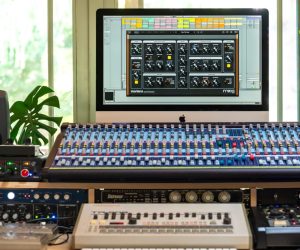
Moog One
Moog One is the company’s first polyphonic synth in over 35 years. The tri-timbral analogue dream-synth is what Moog calls its most ambitious project to date — an electronic odyssey encompassing years of research and decades of exploration, culminating in the birth of a new flagship synthesizer. Available in eight-voice or 16-voice configurations, each individual Moog One voice circuit contains an analogue signal path more powerful than a Minimoog Voyager, harnessing the power of three newly-designed dual-output analogue VCOs with ring mod and FM, two independent analogue filters, a dual source analogue noise generator, analogue mixer with external audio input, four LFOs, and three envelope generators. Each of Moog One’s three analogue timbres is an independently addressable polysynth, each with its own sequencer, arpeggiator, and onboard effects library — including a suite of professional reverbs from Eventide.
















RESPONSES